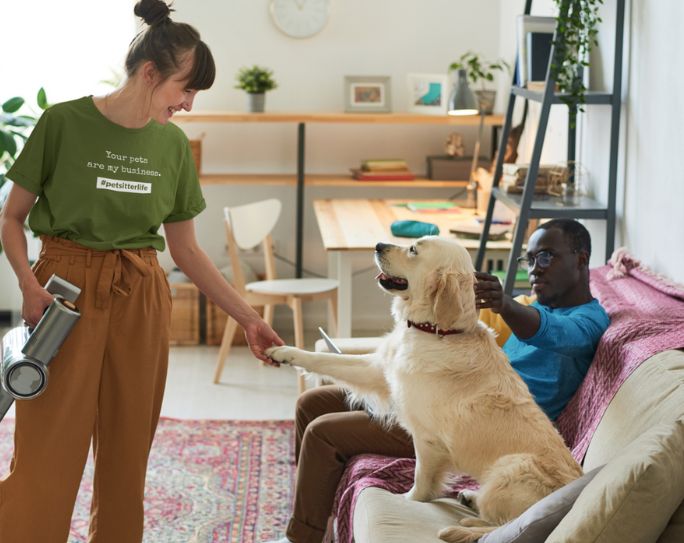5 Questions You Should Ask about a Pet’s Health and Behavior
PSI Staff | Updated April 2024

At Pet Sitters International, we have always stressed the importance of the initial client meeting, or meet and greet, to professional pet sitters. Not only is it an important opportunity for clients to get to know you, it’s also the best time for you to decide if you’re a good fit for the job (and if you even want it!). But that meeting won’t help you if you aren’t asking the right questions about a potential client’s pets.
We don’t have to tell you that every pet is unique and has equally unique health needs and behavioral traits. So, in addition to get basic information such as dates needed, visit times and basic contact information, it’s vital to ask about each pet’s health and behavior history.
Composing a profile of each individual pet’s health and behavior helps you provide top-notch care, makes your professionalism shine and helps you identify any red flags that may mean the job isn’t a good fit.
Here are some questions that will help you get a more complete picture of each pet’s behavior and health:
Include these questions in either your pet-sitting service contract or pet profile sheets.
- How does your pet react to your absence from home? As a pet sitter, your job is to be there when pet parents can’t. Pets behave differently when their pet parents are away and asking this question will give you an idea of what to expect when you open the door for your first visit.
- Does your pet have any hiding places? Having the answer to this question will determine how you spend your visits. You could be confidently providing care, because you know these pets have a tendency to hide and you’ve already peeked in on them to make sure they are safe. Or you could be throttled by panic, because you cannot find the pets and are terrified they’ve made an escape.
- How does your pet react to children or other pets? You do not want to discover that a dog you are walking feels threatened by children or other pets after he or she has already bitten one. Pet sitters are advocates for the pets in their care and having this knowledge upfront can help you plan your visit accordingly, with safety of the pet, yourself and others as the top priority.
- Does your pet have any physical conditions, issues or illnesses that I should be alert to? This question is self-explanatory, but it’s important enough that it bears repeating. Not all conditions or illnesses are readily apparent just from looking and being aware of the health needs of each pet is vital to their continued well-being. Unfortunately, we’ve heard from pet sitters who have arrived to visits to find a deceased pet, only to later learn that it had health issues the client had not disclosed.
- Has your pet ever bitten/scratched anyone (pet or human)? It's important to be specific when asking this question, as simply asking a pet parent if their pet is "aggressive" or "has shown signs of aggression" will likely yield a quick answer of "absolutely not!" (and of course, a pet who has previously bitten/scratched may very well not be aggressive). In the pet profile sheets available through PSI, we ask this question: Is there any reason I should approach your pet with caution?
Remember, as much as you want to help every pet that crosses your path, you need to know up front if there is potential for you to be hurt. One bad bite can end your career as a pet sitter, so make your own self-care a priority by asking this question. For more tips on preventing pet bites and scratches, read this previous PSI blog post.
If you use the pet-sitting service contract available through PSI, the pet profile sheets that accompany the contract can be emailed (or uploaded in your software program for clients to access) before the initial consultation/meet and greet.
This is a great way to obtain pertinent information before your first meeting with a client's pet. For example, if a client has shown fear of individuals wearing hats for example, you would want to know that before arriving to the meeting.
Remember, you should have a pet profile sheet completed for each pet in your clients' homes.
Knowledge is the most important tool in your pet sitting arsenal, but you only get answers from asking the right questions. By incorporating these questions into your first meeting (or requesting this information before the initial consultation), you get the information that you need to keep your standard of care at its best!







Comments
Dot Roise-Lodsin
I include a question about whether the pet eats foreign objects. Some dogs will eat anything they come across during a walk. Acorns, paper wrappers, mango pits are a few of the things I have had to rescue from a pup's mouth. Some cats like to chew plastic grocery bags, which can cause an expensive, life threatening bowel obstruction.
I also ask about food sensitivities and allergies because I carry food rewards.
Another question related to hiding places is noise aversions. Fireworks, thunder and vacuum cleaners. How does the pet react? Keep his/her hiding place accessible and comfortable.
Thank you for the pawsome article!
Shelayne Fico
I have accumulated quite a new questions at my Meet and Greet that I gleaned from incidents that actually happened. One important question, especially in multi dog households is if any of them guard their food bowls. Some dogs are fine until it comes to feeding time, so it is good to know in advance, find out how the owners handle it, etc.
Florence Odell